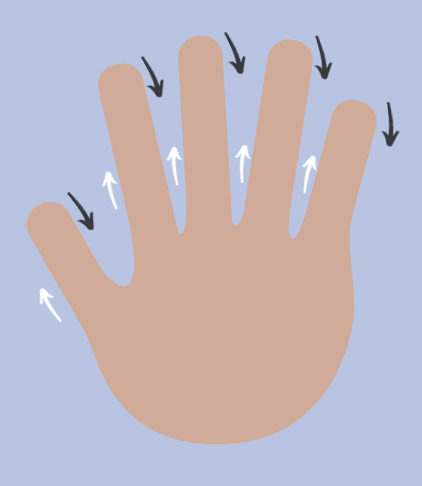What do we know about breathing and mindfulness strategies?
Deep breathing exercises are incredibly valuable for kids' mental health. They give children a simple but powerful way to handle their emotions and deal with stress. When kids practice deep breathing, they learn to control their feelings, lower their anxiety, and find a sense of calm. Stressful things like a fast heart rate, quick breathing, and high blood pressure all go down when you take deep breaths and relax. The best part is, deep breathing is an emotion regulation tool that's always with you!
By making deep breathing a part of their daily routines, children build resilience and develop coping skills for tough times.

The key is to practice, practice, practice!
We need to practice these strategies OUTSIDE of moments of dysregulation, before our children can incorporate them INTO moments of dysregulation. Some kids also benefit from visuals related to the mindfulness/breath exercise that we are trying to have them do. Visuals can be tactile pieces of paper that show the steps or have an image to remind them, or engaging like a video (e.g., bubble breathing video- https://www.youtube.com/watch?v=9tOJZQhO_Uw)
Here are some of our favourite strategies below that you can try with your child to help them regulate.
Finger Breathing
Trace each finger with your pointer finger. Take a deep breath in as you go up each finger and exhale as you go down each finger.

Paced Breathing/Square Breathing
Breath in deeply through your nose (abdominal breathing) for four seconds and then breathe out through your mouth (for four seconds). Do this for 1-2 minutes. You can also anchor this to a visual, or imagine tracing the edges of a square for each step of the pathway.

5-4-3-2-1 technique/ 5 senses technique

Research shows that strategically activating each of the five major sensory modalities (i.e., sight, smell, hearing, taste, and touch) can increase positive emotion and decrease negative emotion.
Instruct your child to look around and focus on:
5 - LOOK: Look around for 5 things that you can see, and say them out loud. For example, you could say, I see the computer, I see the cup, I see the picture frame.
4 - FEEL: Pay attention to your body and think of 4 things that you can feel, and say them out loud. For example, you could say, I feel my feet warm in my socks, I feel the hair on the back of my neck, or I feel the pillow I am sitting on.
3 - LISTEN: Listen for 3 sounds. It could be the sound of traffic outside, the sound of typing or the sound of your tummy rumbling. Say the three things out loud.
2 - SMELL: Say two things you can smell. If you’re allowed to, it’s okay to move to another spot and sniff something. If you can’t smell anything at the moment or you can’t move, then name your 2 favorite smells.
1 - TASTE: Say one thing you can taste. It may be the toothpaste from brushing your teeth, or a mint from after lunch. If you can’t taste anything, then say your favorite thing to taste.
Download and print this FREE emotion regulation bookmark HERE!
Belly Breathing
Have your child sit or lay flat in a comfortable position. Have them put one hand on their belly, just below their ribs, and the other higher on their chest. Instruct them to take in a deep breath through their nose, have their belly push their hand out as the breath fills, and their chest should not move. Have them breath out through their mouth. Do this 4-10 times, slowly. This can also be modified to having the child imagine their bellow is a balloon as they breath, nothing their belly expanding and contracting with breaths!
Candle Breathing
There are strategies that have your child use their fingers/hands in front of their faces and use their imagination to promote deep breaths. One example is having your child to hold up the number of fingers that corresponds with their age and imagine each finger is a birthday candle that needs to be blown out. Tell them to take a slow, deep breath in and exhaling slowly, blowing out one birthday candle at a time. They can also imagine they are holding a pinwheel, and need to blow steady breaths to help it spin, or that each finger is a hot french fry that needs to be cooled down! Use their interests to ground them in the activity.

Our team at WonderTree provides support to caregivers and youth to support building emotion regulation and coping strategies. Our blog here helps guide caregivers to promote emotion and behaviour regulation in their youth.
Book recommendations
by Alicia Ortego
by Kira Willey and Anni Betts
by Kira Willey and Anni Betts
by Kira Willey and Anni Betts
by Kira Willey and Anni Betts
If you want to get started on support first:
Unsure of what support you may need?

Comments